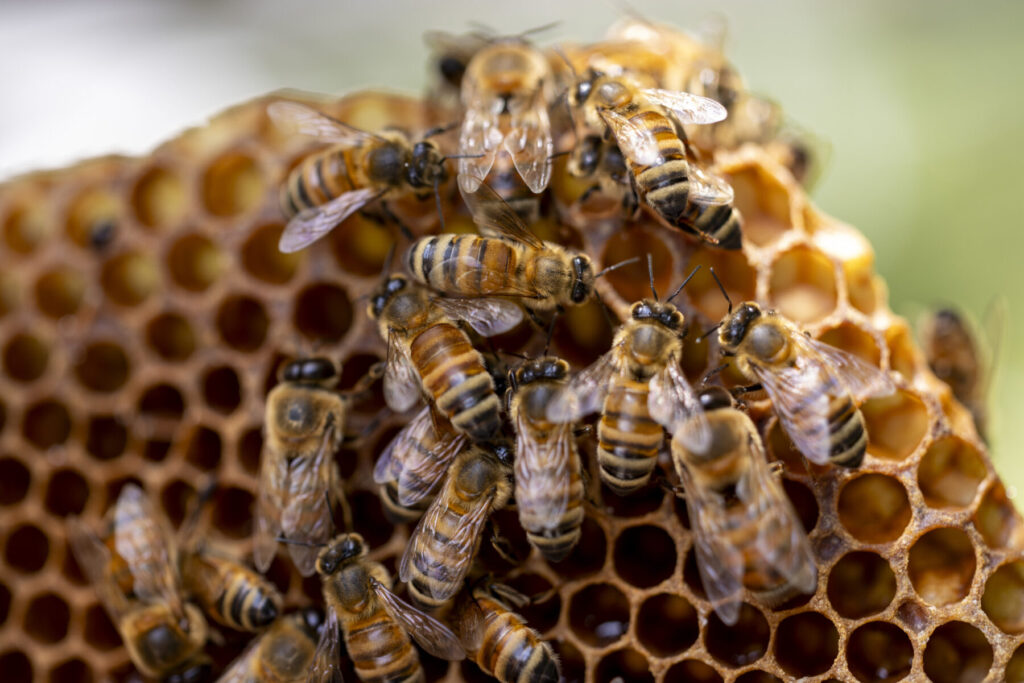Authors: Elmer Gray, Research Professional IV, University of Georgia and Jennifer A Berry, Adjunct Professor, Entomology, University of Georgia
Sydney Weigand (Ed.), 2025

Most Georgia residents are well-aware of how annoying mosquitoes can be. Not only do they deter us from participating in our favorite outdoor activities, they can spread serious diseases like West Nile virus. In many instances, it is imperative that their populations be controlled.
On the other hand, pollinators like honeybees are incredibly necessary for the health of our environment. They aid in the production of seeds and fruits, and they’re often culturally beloved. However, improper mosquito management techniques can accidentally result in the deaths of these important organisms.
Because of this intersection, effective communication is required from both those that wish to manage mosquitoes and those that wish to protect pollinators.
In 2006, beekeepers began noticing strange losses in honey bee populations, a phenomenon that has since been dubbed “colony collapse disorder,” or CCD. Habitat destruction, parasitic mites, and pesticide usage are now believed to be the primary culprits.
Like many insects, honeybees die when exposed to pesticides. Thankfully, when those involved operate diligently, these events can be prevented. Both beekeepers and pesticide applicators have roles to play.
To keep their bees safe, beekeepers should:
- Make sure they’re aware of nearby commercial pesticide applications.
- Speak to neighbors to find out if they’re treating their yards.
- Inform applicators about the presence of colonies. Local operational and public health administrations can serve as points of contact.
- Educate themselves on local mosquito control practices.
- Position hives 300 feet or more away from potential truck spray routes.
- Erect barriers like fences or hedges between spray routes and their hives.
- Ensure that hive openings face away from routes.
- When informed by applicators that adulticide is being applied, cover hives with moist burlap or nets to keep the bees inside for a short time.
Commercial mosquito control practitioners should:
- Find out if colonies are present in the area.
- Know the mosquito’s life cycle to better understand treatment.
- Implement Integrated Mosquito Management practices as outlined in UGA Extension Circular 1154.
Homeowners that are concerned about mosquito populations should:
- Find out if their neighbors keep bees.
- Reduce standing water wherever possible. Information about this can be found in the UGA Extension Circular 1266.
- Treat standing water that cannot be eliminated with larvicides approved by the Environmental Protection Agency. A complete list can be found in UGA Extension Special Bulletins 28 and 48.
- Keep an eye out for potential larvae habitats in the neighborhood before they become problems.
Most importantly, all parties must communicate with each other frequently and effectively. If those involved remain mindful, it is possible to manage mosquito populations without causing harm to local honeybees.
For more information, see The Intersection of Mosquito Management and Pollinator Protection (Gray & Berry, 2020).